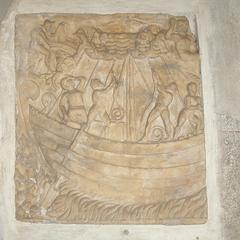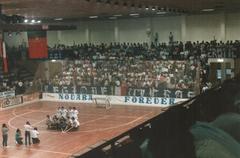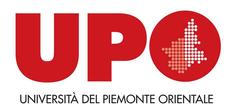Visiting the Monument to Costantino Perazzi in Novara, Italy: Hours, Tickets, and Travel Tips
Date: 03/07/2025
Introduction
The Monument to Costantino Perazzi in Novara, Italy, stands as a significant tribute to one of the city’s most influential 19th-century figures. Perazzi, a patriot, journalist, and politician, played a vital role in the Italian Risorgimento and contributed greatly to the cultural and civic development of Novara. Located in a central public square, the neoclassical bronze statue is not only a testament to Perazzi’s legacy but also a focal point for community identity, public ceremonies, and historical reflection. Its integration into Novara’s urban landscape, proximity to landmarks such as the Basilica of San Gaudenzio and the Broletto, and its open-air setting make it an inviting destination for history enthusiasts and travelers alike.
This guide provides a comprehensive overview of the monument’s history, artistic features, restoration efforts, and practical visitor information, including accessibility, transportation, and local amenities. For the latest updates, guided tours, and audio guides, visitors are encouraged to consult official Novara tourism resources and download the Audiala app (WildTrips, Comune di Novara, Novara Turismo).
Table of Contents
- Introduction
- Historical Context: Costantino Perazzi and Novara
- Artistic Features of the Monument
- Restoration and Conservation Efforts
- Practical Visitor Information
- Nearby Novara Historical Sites
- Community Engagement and Educational Initiatives
- Frequently Asked Questions (FAQ)
- Conclusion and Call to Action
- References
Historical Context: Costantino Perazzi and Novara
Costantino Perazzi: Life and Legacy
Costantino Perazzi (1815–1898) was a prominent figure during the Italian Risorgimento, known for his work as a journalist, advocate for Italian unification, and commitment to liberal ideals. After the unification of Italy in 1861, Perazzi continued his service to Novara as a municipal councilor, championing educational reform, the modernization of infrastructure, and the expansion of public libraries. His dedication to civic responsibility and youth engagement established him as a pillar of Novara’s intellectual and political life.
Novara in the 19th Century
Novara’s strategic position made it central to key political and military events, including the Battle of Novara (1849) during the First Italian War of Independence. Despite setbacks, local leaders like Perazzi kept the spirit of unification alive. The city underwent significant modernization in the late 19th century, with advancements in transportation, public buildings, and civic culture.
The Monument’s Symbolism and Significance
Commissioned in the early 20th century, the monument was designed both as a tribute to Perazzi and as a symbol of Novara’s role in the Italian unification. Its presence in a prominent square reflects the enduring respect for Perazzi’s contributions and the city’s engagement with its historical identity. Annual public ceremonies and educational programs center around the monument, reinforcing its place in Novara’s collective memory (Comune di Novara).
Artistic Features of the Monument
Sculptural Composition
Crafted primarily from bronze, the monument features a life-sized statue of Costantino Perazzi in a dignified pose, with one hand resting on a stack of books—a direct nod to his intellectual pursuits and commitment to education. The work is attributed to renowned sculptor Pietro Canonica, whose attention to anatomical detail and naturalistic drapery places the statue firmly in the tradition of late 19th-century Italian realism (Treccani).
Pedestal and Reliefs
The bronze statue stands atop a granite pedestal adorned with bas-relief panels depicting key moments from Perazzi’s public life and allegorical figures representing Liberty and Progress. The pedestal features inscriptions in classical Roman lettering, connecting the monument to Italy’s ancient heritage while harmonizing with Novara’s urban environment.
Materials and Techniques
The statue was produced using the lost-wax bronze casting method, ensuring durability and fine detail, while the granite base was crafted by local artisans. This combination guarantees the monument’s resilience against time and weather (Piemonte Cultura).
Restoration and Conservation Efforts
Maintenance and Restoration Timeline
- Early 20th Century: Routine cleaning and minor repairs.
- Late 20th Century: Increased urban pollution prompted a comprehensive 1980 restoration, addressing surface corrosion and stone deterioration.
- 2008–2010: Major restoration employed advanced techniques, including laser cleaning, application of protective coatings, and installation of a drainage system. Anti-graffiti measures were also introduced.
- Ongoing: The Comune di Novara conducts regular inspections, cleanings, and environmental monitoring in collaboration with ARPA Piemonte (Comune di Novara Cultural Activities, ARPA Piemonte, Fondazione CRT).
Conservation Challenges
The monument endures exposure to air pollution, weather, and biological growth. Modern restoration emphasizes reversible and gentle techniques, such as breathable protective coatings, to safeguard original materials. Community outreach and sacrificial coatings help mitigate vandalism.
Practical Visitor Information
Location and Access
The monument is located on Via Costantino Perazzi, a street near Novara’s historic center, accessible by foot from major attractions. The area is well-served by public transportation and offers nearby parking (Tuttocittà).
Visiting Hours and Tickets
- Hours: Open-air; accessible 24/7, year-round.
- Tickets: No entrance fee or tickets required.
Accessibility
The site is wheelchair and stroller accessible, with paved walkways and ramps. Improvements for additional accessibility features, such as tactile plaques and audio guides, are underway.
Amenities
Nearby, visitors will find cafes, shops, public restrooms, and benches. The area is well-lit and suitable for visits at any time of day.
What to Expect at the Monument
Artistic and Natural Setting
The monument is uniquely landscaped, with local tradition allowing seasonal grasses and leaves to remain, creating a living frame around the statue. Locals often leave flowers and greenery at the base as a sign of respect (La Voce di Novara).
Photography
Photography is permitted; the best lighting is in the early morning or late afternoon. The site’s integration with the urban landscape allows for scenic views of nearby landmarks.
Travel Tips
- Best Times to Visit: Spring and early summer offer pleasant weather and blooming gardens. Autumn features golden leaves, and winter brings a serene, frosted atmosphere (Weather25 Novara July).
- Combine Visits: Include other sites such as the Basilica di San Gaudenzio, Broletto, and Duomo in your itinerary (Italy This Way).
- Dining: Sample local Piedmontese cuisine at nearby restaurants.
- Language: Italian is predominant, but basic English is understood in tourist areas.
Nearby Novara Historical Sites
- Novara Cathedral: Baroque architecture and neoclassical elements.
- Basilica of San Gaudenzio: Famous for its dome.
- Broletto: Historic civic center.
- Ossuary of Bicocca: Commemorating the Battle of Novara.
Community Engagement and Educational Initiatives
The monument is a venue for annual commemorations, educational workshops, and cultural festivals, fostering civic pride and historical awareness. Local schools and associations participate in guided tours and heritage programs to strengthen community connection to the site.
Frequently Asked Questions (FAQ)
Q: What are the visiting hours of the Monument to Costantino Perazzi?
A: The monument is outdoors and accessible at any time, year-round.
Q: Is there an entrance fee or ticket required?
A: No, the monument is free to visit.
Q: Is the monument accessible for people with disabilities?
A: Yes, paved walkways and ramps provide accessibility.
Q: Are guided tours available?
A: Yes, guided tours including the monument are offered by the Novara tourism office.
Q: Can I take photographs?
A: Photography is permitted and encouraged.
Conclusion and Call to Action
The Monument to Costantino Perazzi is an essential destination for anyone exploring Novara’s history and Italy’s unification. Its free admission, central location, and accessibility make it ideal for all visitors. Ongoing restoration and community programs ensure its preservation for future generations. Enhance your visit by exploring nearby sites, participating in guided tours, and engaging with local culture.
Stay up to date with events and visitor information by downloading the Audiala app and following Novara’s official tourism channels. Discover the enduring legacy of Costantino Perazzi and the stories that define Novara’s civic spirit.
References
- WildTrips: Novara - What to Visit
- Comune di Novara
- Novara Turismo
- Comune di Novara Cultural Activities
- Tuttocittà Map - Via Costantino Perazzi
- La Voce di Novara – L’erba di Costantino Perazzi
- Italy This Way: Novara
- The Crazy Tourist: Best Things To Do in Novara
- Treccani – Costantino Perazzi
- Piemonte Cultura
- Fondazione CRT
- ARPA Piemonte
- Weather25 Novara July
- Ambracore – Monumento Dedicato a Perazzi



